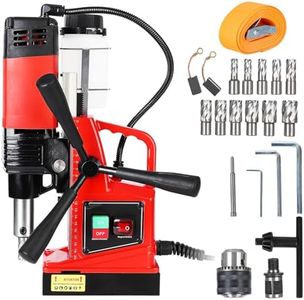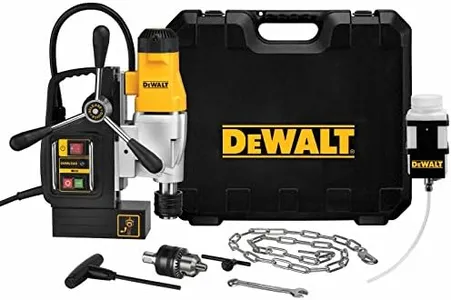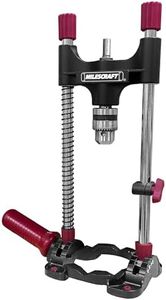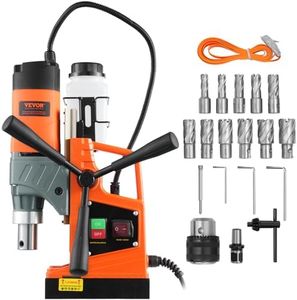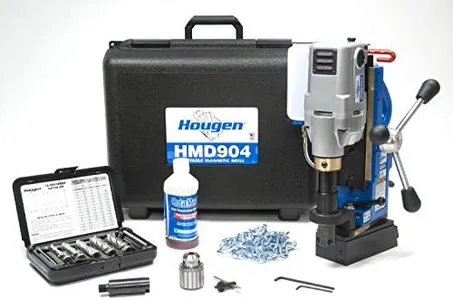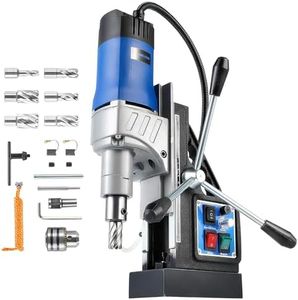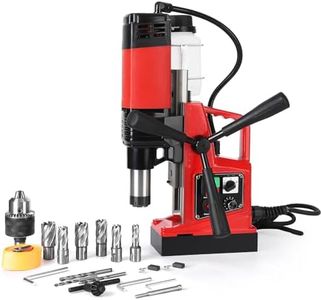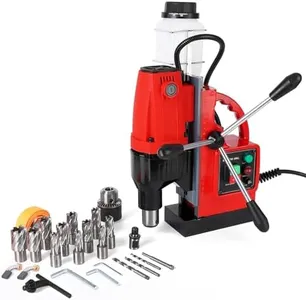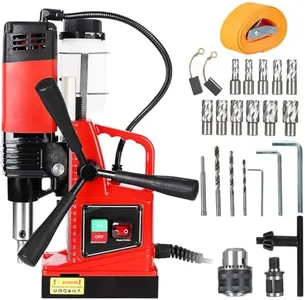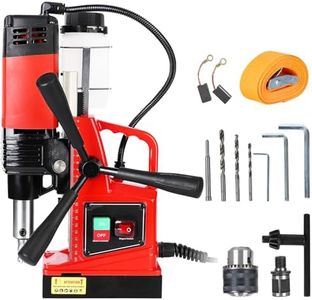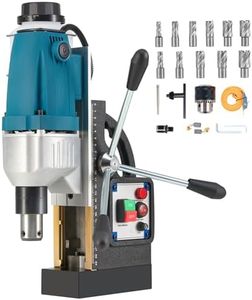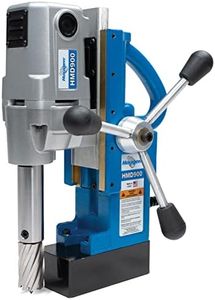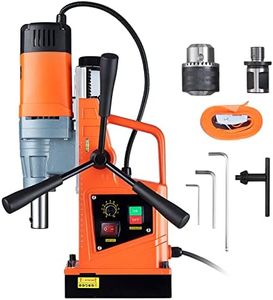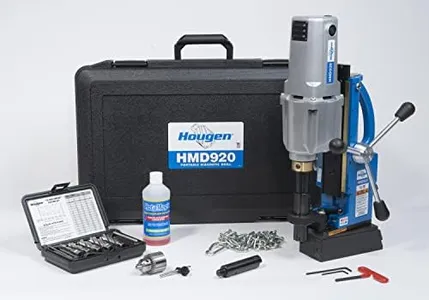We Use CookiesWe use cookies to enhance the security, performance,
functionality and for analytical and promotional activities. By continuing to browse this site you
are agreeing to our privacy policy
10 Best Magnetic Base Drill 2025 in the United States
How do we rank products for you?
Our technology thoroughly searches through the online shopping world, reviewing hundreds of sites. We then process and analyze this information, updating in real-time to bring you the latest top-rated products. This way, you always get the best and most current options available.

Buying Guide for the Best Magnetic Base Drill
Choosing the right magnetic base drill can be a bit overwhelming, but understanding the key specifications can help you make an informed decision. A magnetic base drill, also known as a mag drill, is a portable drilling machine with a magnetic base that can be clamped onto a steel surface. This tool is essential for drilling precise holes in metal surfaces, especially in construction and fabrication work. Here are the key specifications you should consider when selecting a magnetic base drill.Magnetic Adhesion ForceMagnetic adhesion force refers to the strength of the magnetic base's grip on the metal surface. This is crucial because a stronger magnetic force ensures the drill stays securely in place during operation, preventing accidents and ensuring precision. Magnetic adhesion force is usually measured in pounds or kilograms. For light to medium-duty tasks, a force of around 1,500 to 2,000 pounds may suffice. For heavy-duty industrial applications, look for a force exceeding 2,500 pounds. Consider the thickness and type of metal you'll be working with to determine the appropriate adhesion force.
Motor PowerMotor power, measured in watts or horsepower, determines the drill's ability to handle tough materials and larger drill bits. A more powerful motor can drill through thicker and harder metals more efficiently. For light-duty tasks, a motor power of around 800 to 1,200 watts may be adequate. For more demanding applications, look for a motor power of 1,200 watts or higher. Assess the type of materials and the size of holes you need to drill to choose the right motor power for your needs.
Drill SpeedDrill speed, often measured in revolutions per minute (RPM), affects the efficiency and quality of the drilling process. Variable speed settings allow you to adjust the speed based on the material and drill bit size, providing better control and precision. Lower speeds are suitable for harder materials and larger bits, while higher speeds work well for softer materials and smaller bits. Look for a magnetic base drill with adjustable speed settings to accommodate a variety of drilling tasks.
Drilling CapacityDrilling capacity refers to the maximum diameter and depth of the hole the drill can create. This is important to ensure the drill can handle the specific requirements of your projects. For general-purpose use, a drilling capacity of up to 1-1/2 inches in diameter and 2 inches in depth may be sufficient. For more specialized or industrial applications, you may need a drill with a larger capacity. Consider the typical size of holes you need to drill to determine the appropriate drilling capacity.
Weight and PortabilityThe weight and portability of the magnetic base drill are important factors, especially if you need to move the drill frequently or work in tight spaces. Lighter drills are easier to transport and maneuver but may have less power and stability. Heavier drills offer more stability and power but can be cumbersome to move. Balance your need for portability with the power and stability required for your tasks to choose the right weight for your drill.
Safety FeaturesSafety features such as overload protection, safety guards, and automatic shut-off are essential to prevent accidents and ensure safe operation. Overload protection prevents the motor from overheating, while safety guards protect the user from debris and moving parts. Automatic shut-off features can stop the drill if it loses magnetic adhesion. Prioritize drills with comprehensive safety features to protect yourself and others during operation.
Most Popular Categories Right Now
